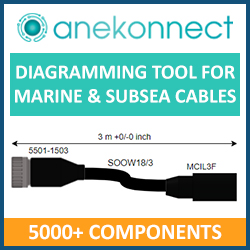Vice President of Education Candidate - Dr. Andrew Bennett
 Dr. Andrew Bennett has over 40 years of experience in R&D and education, focusing on developing novel robot systems for land, water, and air use. He worked in the Stanford Department of Mechanical Engineering on a robotic all-terrain wheelchair and later at the MIT AUV lab on autonomous underwater vehicles, including the Sea Squirt, Odyssey I, and Odyssey II. Subsequently, he joined Walt Disney Imagineering Research & Development and contributed to full-sized walking robot technology, which led to "Flower," a free-walking bipedal robot used in Disney Parks, along with various ride effects in Disney's Animal Kingdom. He then became Director of iRobot's Government and Industrial Robotics division (later known as Endeavor Robotics), where he managed the development of the PackBot mobile robot system; thousands are in service, with one displayed at the Smithsonian American History Museum. He left iRobot to serve as VP for Research & Development at Scientific Systems Company, overseeing technical direction for several control and sensor development programs. Dr. Andrew Bennett has over 40 years of experience in R&D and education, focusing on developing novel robot systems for land, water, and air use. He worked in the Stanford Department of Mechanical Engineering on a robotic all-terrain wheelchair and later at the MIT AUV lab on autonomous underwater vehicles, including the Sea Squirt, Odyssey I, and Odyssey II. Subsequently, he joined Walt Disney Imagineering Research & Development and contributed to full-sized walking robot technology, which led to "Flower," a free-walking bipedal robot used in Disney Parks, along with various ride effects in Disney's Animal Kingdom. He then became Director of iRobot's Government and Industrial Robotics division (later known as Endeavor Robotics), where he managed the development of the PackBot mobile robot system; thousands are in service, with one displayed at the Smithsonian American History Museum. He left iRobot to serve as VP for Research & Development at Scientific Systems Company, overseeing technical direction for several control and sensor development programs.
After SSCI, Dr. Bennett transitioned to education as Director of the SCOPE program and Systems Engineering/Robotics Instructor at Franklin W. Olin College of Engineering. Currently, he is the Education Administrator for the MIT Sea Grant Program and a Senior Lecturer in the MIT Department of Mechanical Engineering, teaching the capstone Ocean Engineering class. Dr. Bennett holds four issued patents and has five pending.
Indicate one or two key goals that you hope to accomplish in this position over the next 3 years:
There is a noticeable gap between the employment needs and opportunities available in ocean-related industries and the public's perception of these sectors. In my role at MIT Sea Grant, I interact with both potential employers and students, ranging from middle and high school communities to undergraduate and graduate cohorts. This issue can potentially be addressed through a combination of outreach efforts and well-designed educational programs. Outreach initiatives should aim to demonstrate to students and future employees that careers in ocean industries are challenging, engaging, and rewarding. Concurrently, educational programs must highlight the possibilities within this field while equipping students with the necessary skills and knowledge to become competitive candidates for employment within maritime communities and industries. It is important to foster cooperation between the educational and industrial communities to create new projects and programs that will achieve these goals.
Discuss the qualities and experience you possess that make you a strong candidate for the position for which you are running:
I have a proven record of working with both industry and education to create programs that are on the path to satisfy these goals. An example is the Sea Perch II program, created as a response to the need to add more modern technology to the highly successful Sea Perch, which currently reaches over 250,000 students each year, but still uses a design created by MIT Sea Grant in the late 1990s. I wanted to create a new program without adversely affecting the successful existing Sea Perch. The Sea Perch II program is modular in design, with each module creating new functionality which can be attached to an existing Sea Perch. The modules all come with how-to guides, teaching materials, and detailed instructions and examples to allow both the student and the instructor to take the materials and bring it into the classroom with minimal effort. Modules can build upon modules or be used separately. The program was developed in cooperation with multiple schools, the RoboNation organization, and has now attracted the interest of the US Navy Maritime Industrial Base group. In a similar fashion, I believe that I can apply my skills to the broader issue of bringing more attention and prospective employees to the ocean industry and community.
|



